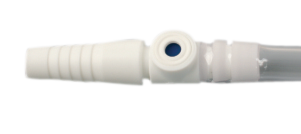Endotracheal Tubes for Sale, Cuffed, Nexgen healthcare products, Medical Products, Nexgen medical products.

An interprofessional team is necessary to make sure that an ETT is placed appropriately, especially in the
emergency department setting. As there is no one definitive method to ensure appropriate ETT placement, an interprofessional team working together to confirm several means of tube placement is necessary to ensure optimal patient outcomes. For example, after emergent intubation in the emergency department, a respiratory therapist may ensure a good color change of the end-tidal CO2 detector while also securing the ETT. Endotracheal Tubes for Sale Simultaneously, nursing staff may auscultate over the lung fields and abdomen to ensure good quality, equal breath sounds in the thoracic cavity with absent breath sounds in the abdomen. The physician will be monitoring the pulse ox while ordering a stat portable chest x-ray to confirm the placement of the tube. It has become more common and standard of care to have a constant waveform monitor for end-tidal CO2 for intubated patients, especially in the OR and ICU. Collaboration, closed-loop communication, and the principles of crisis resource management are necessary for the success of teams working in acute care environments.
Intubation, or
placement of an endotracheal tube, is an important life-saving skill. All clinicians who work in emergency rooms, operating rooms, peri-operative areas, and intensive care units (all places with intubated patients) must understand the basics and mechanics of an endotracheal tube. This knowledge is necessary for appropriate ventilator settings and the management of intensive care-level patients.
Several mechanical complications can occur with the ETT resulting in a loss of function. A defective balloon will result in a loss of ability to protect the airway from aspirate and may make mechanical ventilation difficult. The loss of the universal 15 mm connector (either missing or defective) essentially makes the ETT nonfunctional as the mechanical ventilator or bag-valve-mask cannot interface with it. Some complications from the physical placement of the tube include bleeding, infection, perforation of the oropharynx (especially with the use of a rigid stylet), hoarseness (vocal cord injury), damage to teeth/lips, or esophageal placement.
Select an appropriate size endotracheal tube and remove it from the package. Lubricate the distal end and balloon (if not emergency placement). Attach a proper size syringe (10 to 20 cc) filled with air to the pilot balloon and test the balloon by blowing it up and then deflating it. Place a stylet into the ETT and bend it to an appropriate shape. Place the tube with the stylet and attached syringe back in the package ready for use. Repeat the same procedure with a tube one size smaller in case of difficult intubation. Set aside an end-tidal CO2 detector.
